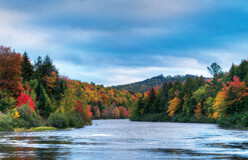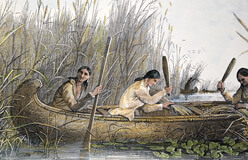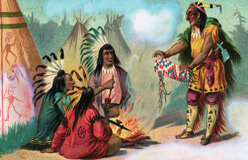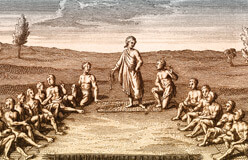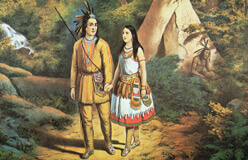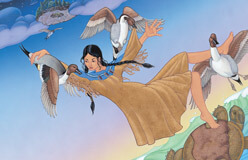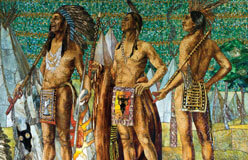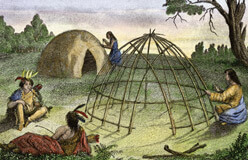Some nations of the eastern woodlands banded together to form confederacies. The goal of a confederacy is to work together for common interests and fight together against common enemies.
Five of the Iroquois nations had a very special relationship. They were the Mohawk, the Oneida, the Onondaga, the Cayuga, and the Seneca. They lived near one another in what is now New York State. At some point before Europeans arrived in North America, the five nations organized the Iroquois League to promote peace among themselves. Their system of government was so successful that the framers of the U.S. Constitution were inspired by it. Ben Franklin wrote that the new United States could learn a lot about political unity from the Iroquois League.
